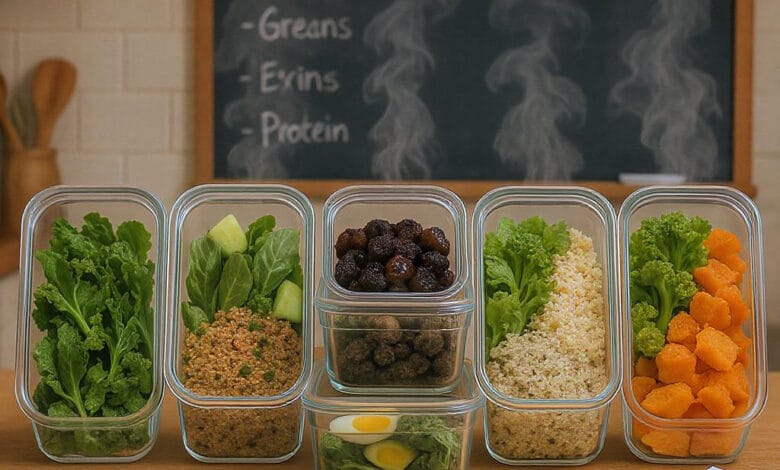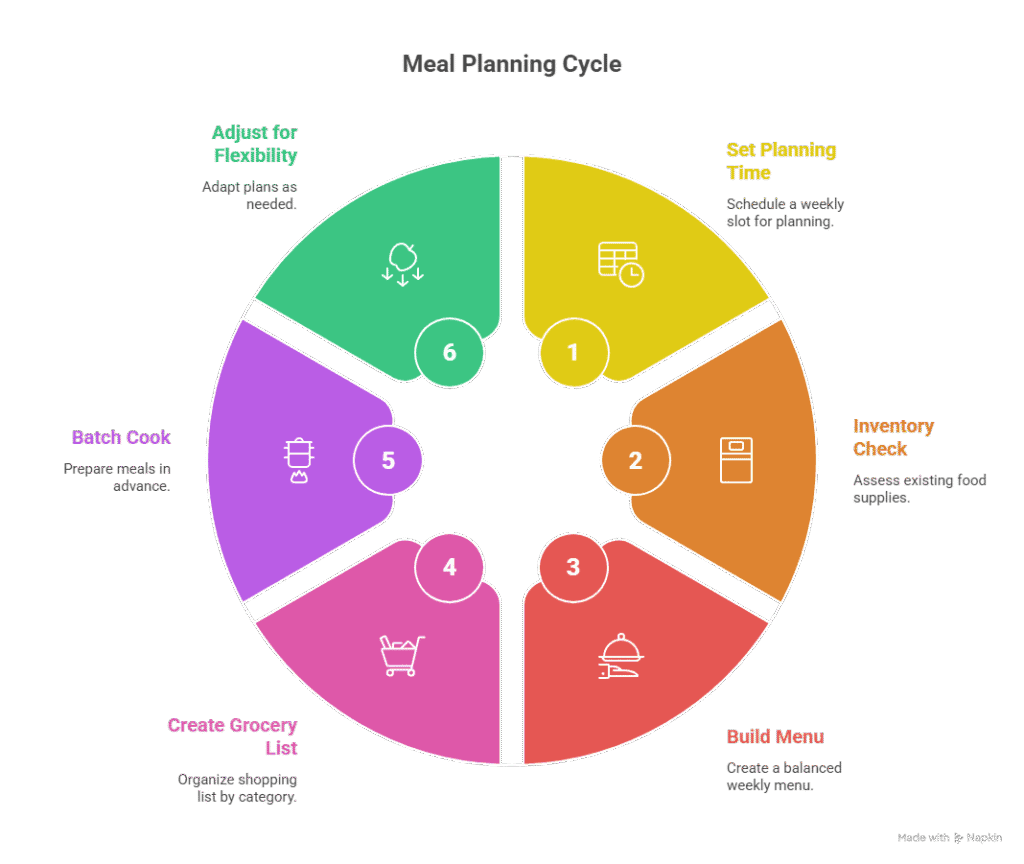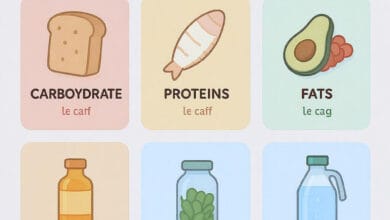Why is it important to have a balanced meal plan?

I. Introduction
In an age of fast food, endless takeout apps, and chaotic schedules, the simple act of eating well has become surprisingly complex. We’re bombarded with nutrition fads, calorie calculators, and Instagram-perfect smoothie bowls—but often left asking: what actually makes a meal healthy?
Enter the balanced meal plan.
Balanced eating isn’t about strict diets or denying yourself chocolate. It’s about nourishing your body with intention—eating a variety of whole foods that give you energy, support your immune system, and keep you mentally sharp. And when combined with smart meal planning, this lifestyle becomes not just attainable, but sustainable.
In this blog, we’ll dive into:
- What a truly balanced meal looks like
- Why it matters for your physical and mental well-being
- How intentional meal planning can simplify your life and elevate your health
- Practical tips and science-backed strategies to get started today
II. What is a Balanced Meal Plan?
At its core, a balanced meal plan is a nutritional blueprint—one that ensures your body gets everything it needs to thrive. It’s not about perfection or precision; it’s about proportion and variety.
A balanced meal includes the right mix of macronutrients and micronutrients, typically:
- Carbohydrates – Your body’s main energy source
- Proteins – Crucial for muscle repair, immunity, and cell function
- Fats – Essential for hormone health, brain function, and nutrient absorption
- Vitamins and Minerals – The microscopic powerhouses that fuel your metabolism, immunity, and development
- Fibre – For gut health and blood sugar balance
- Water – The quiet MVP behind every bodily process
When you consistently fuel your body with this blend, you’re not just “eating healthy.” You’re empowering better sleep, sharper focus, stable moods, stronger immunity, and a more resilient you.
Food is more than fuel—it’s information. What you eat directly impacts how you feel, think, and move through your day. And when your meals are balanced, your life is, too.
III. Why Is It Important to Have a Balanced Meal Plan?
A well-balanced meal plan is more than just a healthy habit—it’s your daily investment in long-term wellness. Here’s why it matters:
A. Maintains Good Health and Prevents Disease
Balanced meals fuel every vital process in your body. They provide the nutrients needed for:
- Heart health
- Brain function
- Bone strength
- Hormonal balance
They also help reduce the risk of chronic illnesses like type 2 diabetes, high blood pressure, and certain cancers.
B. Supports Healthy Weight Management
Balanced eating helps you feel fuller for longer. By including fiber-rich carbs, lean proteins, and healthy fats, you avoid energy crashes, emotional eating, and overeating—without counting every calorie.
C. Enhances Energy and Mental Performance
Want to power through your day without a 3PM slump? Meals with complex carbs and proteins provide steady energy, while nutrients like omega-3s and B vitamins enhance focus, memory, and mood.
D. Promotes Proper Growth and Development
For kids, teens, and pregnant individuals, balanced nutrition supports physical growth, brain development, and strong immunity. It lays the foundation for a healthier life ahead.
E. Improves Digestion and Gut Health
Fiber from fruits, vegetables, legumes, and whole grains keeps your digestive system running smoothly, preventing constipation and supporting a healthy gut microbiome.
F. Strengthens the Immune System
Nutrients like vitamin C, zinc, and antioxidants—found in colorful fruits and vegetables—help your body fight infections, recover faster, and stay resilient through seasonal bugs.
G. Encourages a Healthy Relationship with Food
By eating a variety of whole foods without restrictions or guilt, you develop a more mindful, positive approach to food. That reduces cravings, emotional eating, and binge cycles.
IV. Core Elements of a Balanced Meal Plan
| Food Group | Example Foods | Primary Benefits |
| Fruits & Vegetables | Apples, berries, spinach, carrots | Rich in vitamins, minerals, fiber, and antioxidants for overall health |
| Whole Grains | Oats, brown rice, quinoa, whole grain bread | Provide sustained energy, fiber, and essential B vitamins |
| Lean Proteins | Chicken, fish, tofu, lentils, eggs | Supports muscle repair, immunity, and hormone function |
| Dairy & Alternatives | Yogurt, milk, almond milk, cheese | Supplies calcium, vitamin D, and protein for strong bones and teeth |
| Healthy Fats | Avocados, nuts, olive oil, fatty fish | Promotes brain health, heart function, and nutrient absorption |
| Water & Hydration | Water, herbal teas, high-water fruits | Essential for digestion, temperature regulation, and cell function |
V. Practical Benefits of Meal Planning
Saves Time and Money
Meal planning reduces impulse grocery buys and food waste. With a plan in place, you shop smarter, cook quicker, and eat out less.
Encourages Consistency and Control
Having a plan helps you stick to balanced eating, avoid decision fatigue, and prevent last-minute unhealthy choices.
Builds Positive Family Habits
Eating balanced meals together fosters stronger family connections and sets a powerful example for children to follow for life.
VI. Tips for Successful Meal Planning
- Set Planning Time
Block out a weekly slot—Sunday brunch or midweek evening—to map out your meals. Treat it like any important appointment. - Inventory Check
Before you list new buys, take stock of your fridge and pantry. Use what you have to minimize waste and maximize savings. - Build a Balanced Weekly Menu
Sketch out breakfasts, lunches, dinners, and snacks. Aim for color, variety, and all key food groups represented each day. - Create a Targeted Grocery List
Translate your menu into a precise shopping list organized by category (produce, grains, proteins, etc.) to speed up your trip and curb impulse buys. - Batch Cook and Plan for Leftovers
Double up on soups, grains, or roasted veggies. Portion extras into ready-to-go meals or freezer bags for stress-free midweek dinners. - Adjust for Flexibility and Preferences
Life happens—swap nights or quick-fix meals (like frozen stir‑fries or canned beans) can save the day. Tailor recipes to your tastes and dietary needs.

VII. Resources for Deeper Learning
- NHS UK: Eating a Balanced Diet
- World Health Organization (WHO): Healthy Diet Recommendations
- Healthline: What Is a Balanced Diet?
- Harvard T.H. Chan School of Public Health: The Healthy Eating Plate
- MyPlate.gov: Meal Planning Tips
- Medical News Today: Nutrition and Balanced Diet
- Nutrition Stripped: Why Is a Balanced Diet Important?
VIII. Conclusion
Balance isn’t about perfection—it’s about intention. By weaving a variety of whole foods into your meals and dedicating a bit of time each week to plan, you unlock better health, steadier energy, and genuine peace of mind.
Start small: add an extra vegetable, swap refined grains for whole, or carve out 20 minutes to jot down your menu. Those tiny, consistent steps become powerful habits that last a lifetime. Here’s to your most vibrant, balanced self—one plate at a time!
FAQ
FAQ 1. What’s the difference between a balanced diet and meal planning?
Answer:
A balanced diet refers to eating the right proportions of carbohydrates, proteins, fats, vitamins, minerals, fiber, and water in each meal. Meal planning is the process of mapping out those balanced meals ahead of time—typically for a week—so you shop efficiently, save money, and ensure nutritional variety.
FAQ 2. How do I start creating a balanced meal plan as a beginner?
Answer:
- Set aside planning time (e.g., Sunday afternoon).
- Inventory your pantry to use what you already have.
- Sketch a simple menu including all food groups (fruits, veggies, grains, proteins, dairy/fats).
- Write a targeted grocery list organized by category.
- Batch cook staples and plan leftover nights to save effort.
FAQ 3. Can I adapt this plan for dietary restrictions (e.g., vegetarian, gluten‑free)?
Answer:
Absolutely. Swap animal proteins for plant-based options (beans, lentils, tofu) for a vegetarian plan. For a gluten‑free diet, choose grains like rice, quinoa, or certified gluten-free oats. The key is maintaining variety across the core food groups and meeting your nutrient needs.
FAQ 4. How often should I update my meal plan?
Answer:
Ideally, once a week. This frequency lets you account for grocery sales, seasonal produce, and shifts in your schedule. If your routine changes often, you can adjust midweek by swapping meals or incorporating quick‑prep options.
FAQ 5. What if I don’t like certain foods in the plan?
Answer:
Swap them out! A balanced meal plan is a flexible blueprint, not a rigid rulebook. Replace disliked items with alternatives from the same food group—for example, use bell peppers instead of broccoli, or fish instead of chicken—while keeping the nutrient profile consistent.
Enjoyed this read? You’ll love our next post on: What Is a Balanced Diet and Meal Planning?




